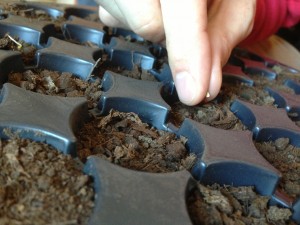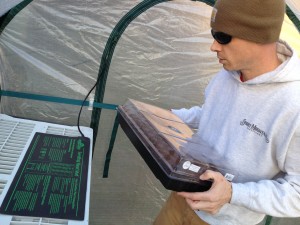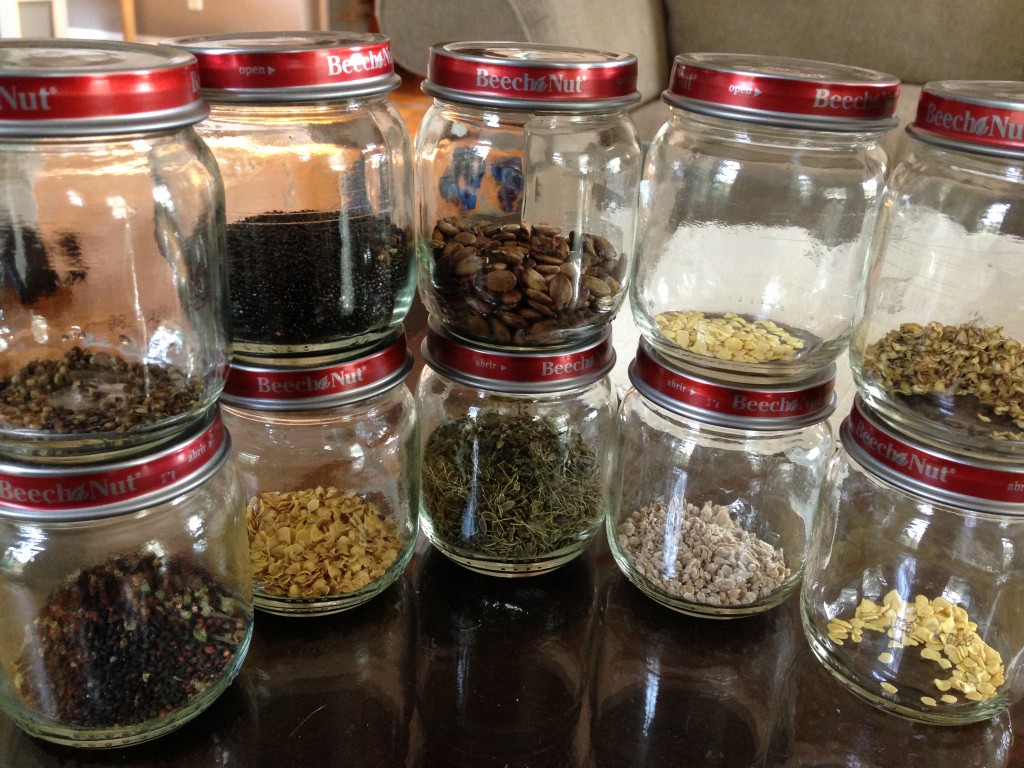
Seeds are pretty inexpensive, and you can find just about any variety of anything in the world online. But this year we selected seeds from some of our best organic plants that were left in the garden to fully mature and produce seeds well into Autumn.
I take small brown paper bags, place the seeds in them, label them with the variety and date and allow them to fully dry for a couple weeks. Since warm temps and humidity can ruin your seeds, place them in small airtight jars and then store in a cool place like your fridge.
Fermenting Seed: This year I went a step further with my tomato seeds by fermenting them. This removes the seed’s gel which contains a germination inhibitor and other potential disease. The entire process take about 5 days, but the steps are pretty easy.
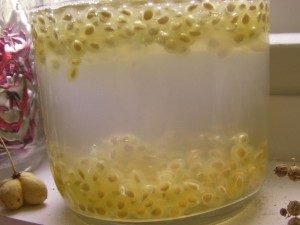
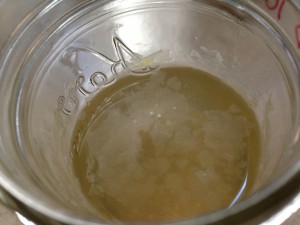
Take a 1/4 to 1/2 cup of filtered water and place the freshly harvested tomato seeds in the water and sit in a cupboard for 3-5 days. Over time, the seeds will float and then sink. A film or mold will develop over the top and the water will become a little cloudy. It will also smell really bad. This is normal.
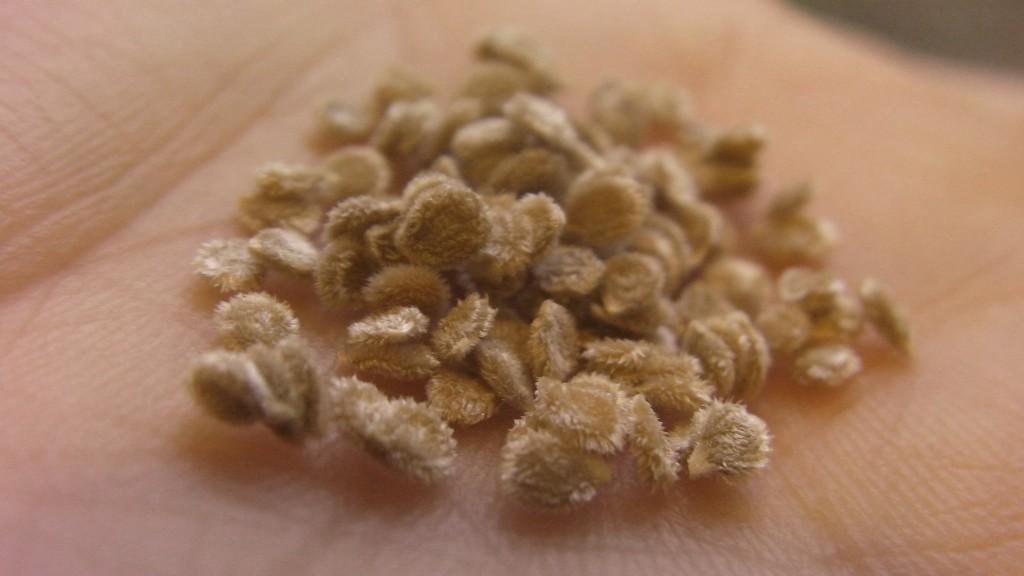
Close to the 5th day, or when all the seeds have sunk to the bottom, carefully remove the top film and then add water. What you are wanting to do is stir up the pulp and other sediment to slowly pour off until you can put the seeds in a sieve and rinse. Set them aside on a paper plate (seeds will stick to napkins) to dry. You should have fuzzy seeds ready to plant next year!

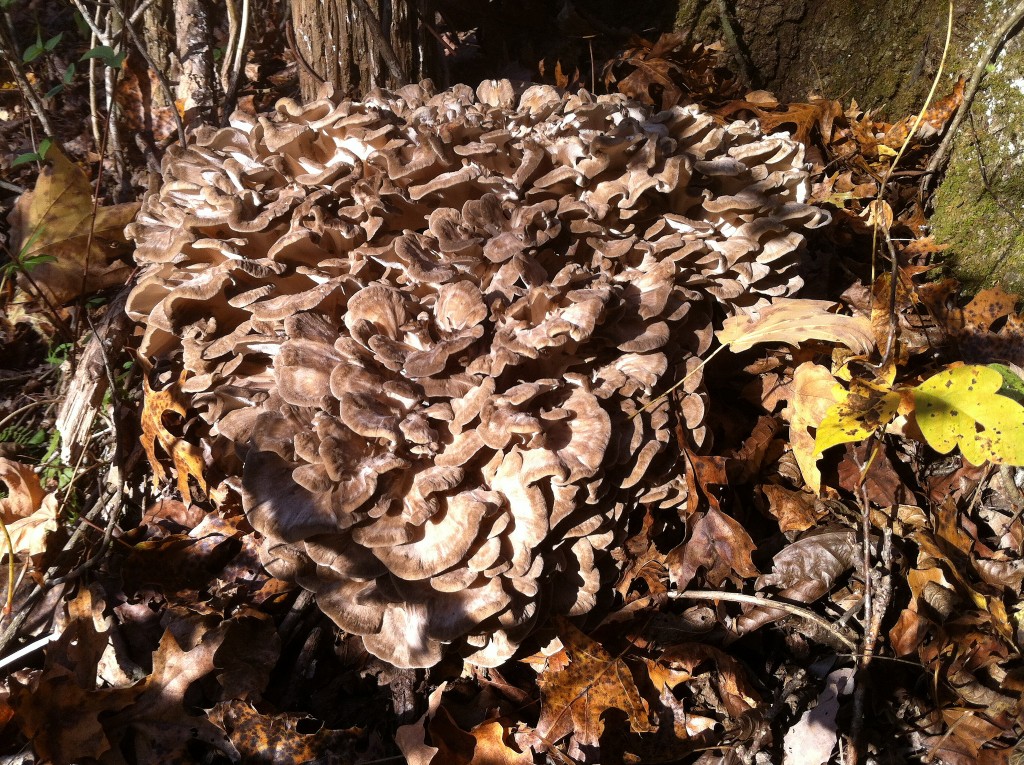
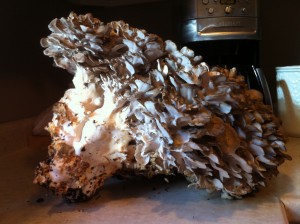 If you find one of these beautiful native mushrooms, and you live within about 75-100 miles of our organic farm in Woodbury, TN, we’d love to come visit and take tissue samples to replicate in our farm’s mushroom lab.
If you find one of these beautiful native mushrooms, and you live within about 75-100 miles of our organic farm in Woodbury, TN, we’d love to come visit and take tissue samples to replicate in our farm’s mushroom lab.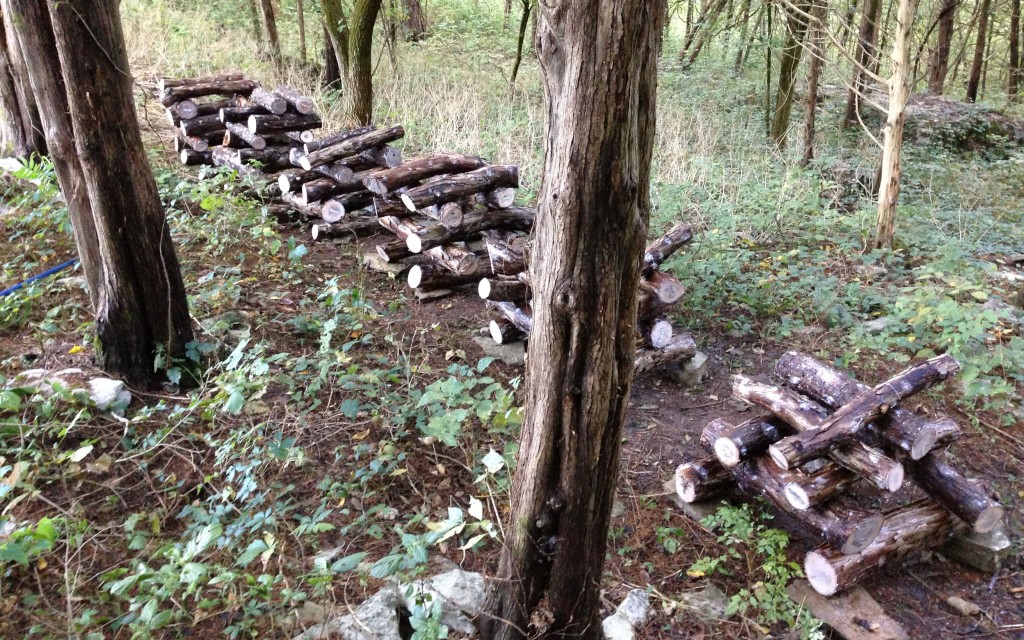
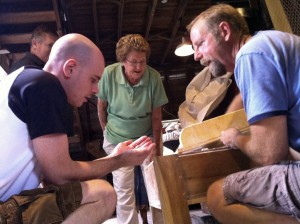
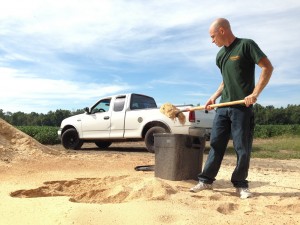
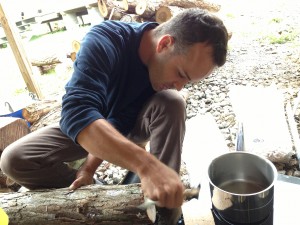 Everything about growing mushrooms feels right. While producing a food with near magical health benefits, we are also sequestering larger volumes of carbon from felled trees into our soil through compost creating a multi-threaded sustainable loop that increases the health of our soil, our food and ultimately our planet.
Everything about growing mushrooms feels right. While producing a food with near magical health benefits, we are also sequestering larger volumes of carbon from felled trees into our soil through compost creating a multi-threaded sustainable loop that increases the health of our soil, our food and ultimately our planet.
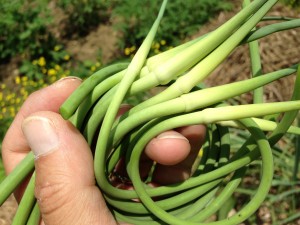 We cut the scapes off to force the plant to send its energy to the bulb, remove the flowering top and use them much like chives in food. They have an amazing fresh flavor that isn’t as strong as garlic.
We cut the scapes off to force the plant to send its energy to the bulb, remove the flowering top and use them much like chives in food. They have an amazing fresh flavor that isn’t as strong as garlic.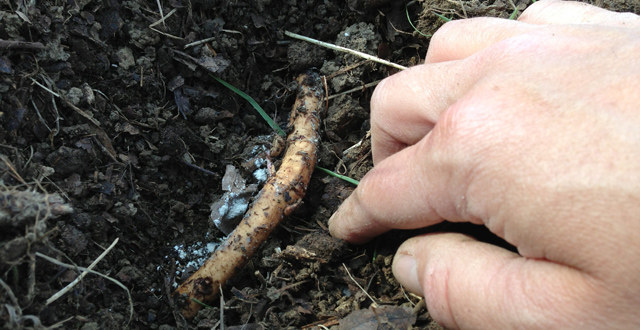
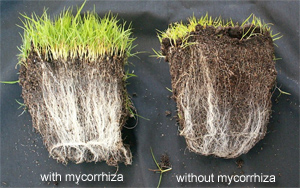 How it works: The fungi is naturally occurring in healthy soil all over the world.
How it works: The fungi is naturally occurring in healthy soil all over the world. 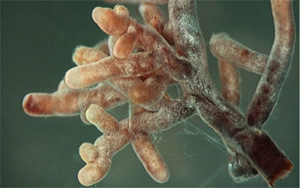 Perfect design: Mycorrhizae are basically a mushroom (mycelium) that feeds off the plant’s sugars through its root system. What the fungus does in return for plants is truely amazing: it takes nutrients and water from the soil and feeds the plant by becoming a huge network of extended roots. The fungi is also what breaks down rocks and minerals for plants. It also makes plants more drought resistant as their access to soil moisture is more than ten times that of non-inoculated plants. One application to roots during transplanting or seeding lasts the entire life of the plant, and the results are indisputable.
Perfect design: Mycorrhizae are basically a mushroom (mycelium) that feeds off the plant’s sugars through its root system. What the fungus does in return for plants is truely amazing: it takes nutrients and water from the soil and feeds the plant by becoming a huge network of extended roots. The fungi is also what breaks down rocks and minerals for plants. It also makes plants more drought resistant as their access to soil moisture is more than ten times that of non-inoculated plants. One application to roots during transplanting or seeding lasts the entire life of the plant, and the results are indisputable.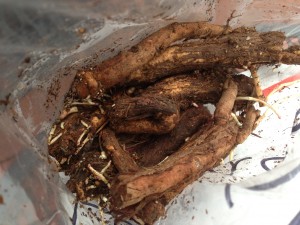 Two things I’m very excited about arrived at the farm this week. First is the
Two things I’m very excited about arrived at the farm this week. First is the 